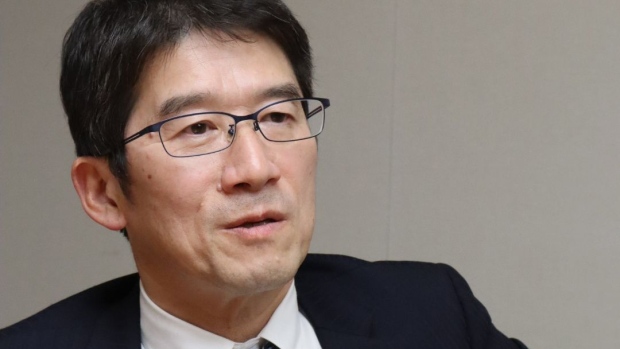Jan 24, 2023
New BOJ Governor Likely to Move Away From Special Stimulus, Ex-Official Says
, Bloomberg News

(Bloomberg) -- The Bank of Japan is likely to start phasing out extraordinary measures such as yield curve control within months of a new governor taking the helm in April, according to a former executive director in charge of monetary policy during the pandemic.
“It’s more likely than not that the BOJ will take steps within the first six months of a new governorship,” Eiji Maeda, the former director, said in an interview with Bloomberg on Tuesday. “Still, even if YCC and the negative interest rate come to an end, the bank will probably continue with monetary easing” to keep rates low, he added.
Maeda, also a former BOJ chief economist, said Japan is on track to break away from an entrenched deflationary mindset as it moves away from being an economy of zero inflation. That gives the BOJ scope to end its extreme stimulus measures, he said.
“Mild inflation is starting to take root,” reducing the need for extraordinary steps, he said, pointing to price growth that could stay in the 1% to 1.5% range. “An economic cycle where inflation pushes up wages may be starting to emerge.”
Maeda spoke a week after Governor Haruhiko Kuroda pushed back against the most intensive market attack on the BOJ’s stimulus framework of his decade-long leadership. Speculation of a looming policy shift had built up in the runup to the meeting fueled by the central bank’s shock move in December to widen its 10-year yield target.
But further changes are unlikely before Kuroda steps down on April 8, said Maeda, who led the BOJ’s efforts to stabilize financial markets at the height of jitters over Covid-19.
Maeda said he suspected that high volatility in the yen was a key reason for the December move. The yen weakened at a record pace against the dollar last year, eventually hitting a three decade-low in October as investors focused on the interest rate differentials with the US.
“There are significant side effects from the YCC including large volatility in foreign exchange rates and a deterioration of market functioning,” Maeda said. “It’s better to end these measures at some point, including the negative rate.”
The widening of the yield band to 0.5% in December followed by the expansion of fund-supplying operations last week offer hints on the likely process for bringing YCC to a close, Maeda said.
The bank won’t just suddenly abandon it without other moves, he said. Instead, the phasing out is likely to come together with an expansion of bond purchases and ample supply of funds to financial markets, he said.
Maeda said the likely options for next steps include a further expansion of the yield range and switching the 10-year target to a shorter maturity. Enlarging the band by another 25 basis points could be a step in the process to end YCC, he added.
“The BOJ could announce it will end YCC in stages and promise to keep the ceiling at 0.75% until the next move,” Maeda said. “Even if the range is just widened by itself, that will be done on the premise that YCC will end, whether they make that clear or not.”
©2023 Bloomberg L.P.





